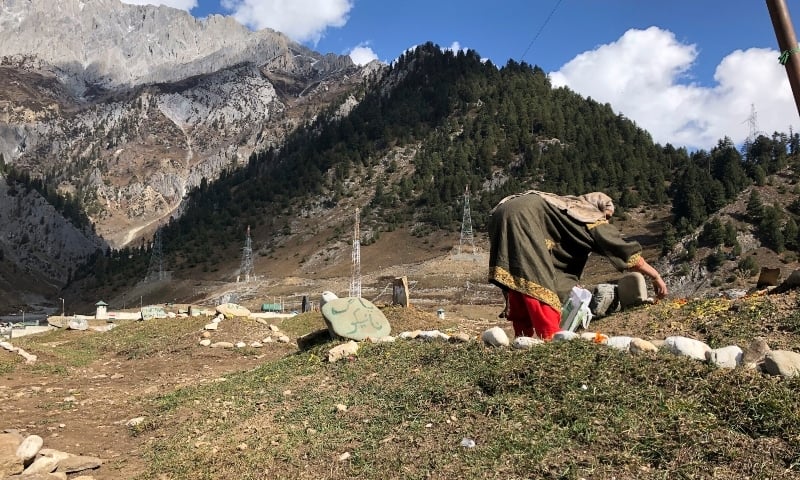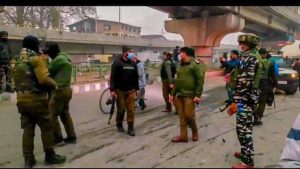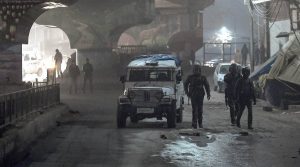
Ghosts of graveyard: Where does Kashmir’s dead go?
Fahad Shah
Kashmir is plunging into an uneasy silence, the blood is flowing on the streets, but the dead are missing.
The graves dug near homes by fathers still lie empty, covered in dirt. “My son is 3-year-old; am I raising him to be killed in a gunfight?” asks a distraught mother. A sister sits by the window in Sopore, waiting for her brother who never returned home. Not even in death.
Amid cries, a testament of mourning is missing. Where does Kashmir’s dead go?
Among other areas, we found some in Wudder Payeen village of north Kashmir’s Handwara — 90 kilometers from Srinagar. When a teenage girl first saw a militant’s body, little did she know that it would change her life forever? She couldn’t return home alone but with trauma. The slain militant’s face stuck with her for months before she sought medical treatment.
Sometimes, it still gets difficult for her. But for nearly 500 households in the village, the silence of death is perpetual. Barely meters away from her home, a barren piece of land, on the top of a hill, has metamorphosed into a graveyard as the village became a confluence of Kashmir’s battered conflict.
On the border of the road, between the two curves, a slope is stuffed with more than a hundred bodies of the militants killed by the government forces in the last two years across Kashmir.
Ghosts of graveyard
In the aftermath of the August 2019 clampdown by New Delhi, when the BJP government revoked the limited autonomy of Jammu and Kashmir and degraded it to a union territory, policy towards militancy was also changed.
The government refused to hand over the bodies of the militants killed in combat and started burying them in discreet graveyards, far from Srinagar, in remote areas of north and central Kashmir. But as it happened: not only militants, but the government didn’t return the bodies in alleged custodial killings and extra-judicial gunfights.
“Earlier, the [authorities] were taking the bodies to the Rajwar forest for burial,” said a local resident. “It is a dense jungle with no inhabitants living around the place. In most cases, the police themselves used to perform the last rites.”
“They used to bury 2-3 bodies together in one grave in remote areas, mostly in forests,” said an old man from Wudder Payeen village. “Around two years ago, one grave, which had two bodies in it, had got filled with water. So, the local residents decided to find land and do proper burials.”
Disturbed by this, the villagers said that to assure a dignified burial to the militants brought in their village, they offered the administration their own piece of land for the last rites.
“We couldn’t bear the thought of how these militants were buried in absence of proper Islamic rituals,” one of the villagers told The Kashmir Walla. “So, all the villagers made a collective decision that we will take it upon ourselves to do the last rites of militants brought here.”
Most graves are covered with plastic sheets. Some have tombstones with details: name, parentage, residence, and date of death, inscribed over them.
Some of the militants that were initially buried in the Rajwar forest, before the burial site was shifted to Waudder Payeen, include Pakistani-born Lashkar-e-Toiba commander Naveed Jatt.
The designated graveyard in the village now has 114 bodies of militants, killed across the valley in the last two years, including the former TRF commander Abbas Sheikh from south Kashmir’s Kulgam.
Guardians of the dead
When Kashmir is dwindling into the silence of a graveyard, with recurrent tales of insanity in deaths, the local residents of Wudder Payeen village have become the guardians of the dead.
Whenever a body arrives in the village, local residents, including a local cleric, gather to perform the last rites. Shrouds are always kept ready for the bodies, who have dotted this slope of land now locally known as ‘martyrs graveyard’.
But during each funeral and burial, the police don’t allow the people to click any videos or photographs. “We are not allowed to take photographs or videos,” said a local resident. “We do the last rites as per religion and respectfully bury the dead. At times, some of those who take part in these funerals were summoned for questioning too.”
People are also scared of the authorities, thus the graveyard or the burials are talked about in hush. After the families hear about their relative’s burial in the Wudder Payeen village, they travel dozens of kilometers to see the grave.
“They also bring tombstones with them and we help them,” said a resident. “Several of these graves have tombstones now. It is for Allah; we offer them water or tea, or whatever they need.”
But when the government forces patrol the streets, the villagers keep their distance fearing harassment. And the silence spreads again, while a father continues to wait for a grave “to sit next to and cry, mourn” and promises to “bury him in the death of a night, in silence”.

